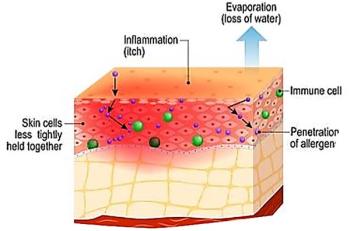
The Journal of Respiratory Diseases
- The Journal of Respiratory Diseases Vol 5 No 11
- Volume 5
- Issue 11
Clinical Citations: Examining influences on asthma morbidity in an urban setting
Although the National Asthma Education and Prevention Program's (NAEPP) guidelines for managing asthma have been widely disseminated, compliance has been less than impressive. Results of a study by Grant and associates in the Chicago area reveal a considerable discrepancy between the NAEPP's therapeutic goals and the asthma control level achieved.
Although the National Asthma Education and Prevention Program's (NAEPP) guidelines for managing asthma have been widely disseminated, compliance has been less than impressive. Results of a study by Grant and associates in the Chicago area reveal a considerable discrepancy between the NAEPP's therapeutic goals and the asthma control level achieved.
They conducted a telephone survey that included 152 adults and children who had active asthma. The incidences of asthma-related emergency department (ED) visits and hospitalizations were 25.7% and 6.6%, respectively.
African American participants were 6.3 times more likely to have visited the ED and 12.3 times more likely to have been hospitalized; these differences could not be attributed solely to asthma prevalence demographics. The results also highlighted the need for improvement in key interventions, such as inhaler-technique education, particularly in patients from low-income households.
In a related editorial, Foggs noted that in Chicago to date, there is a glaring discrepancy between the level of asthma control that is possible (based on available therapies) and the actual level of asthma control (based on resource utilization and morbidity), especially in African American and lower-income communities.
He added that access to health care and continuity of treatment may no longer be the primary obstacles. African American patients who have health insurance are less likely to receive medication or a high level of care than are other populations. Foggs concluded that initiatives to eliminate racial disparities in asthma care must be vigorously pursued.
Articles in this issue
about 20 years ago
Clinical Citations: Can exposure to wood smoke cause lung cancer?about 20 years ago
Case In Point: Silicone-induced pneumonitis in a transgendered patientabout 20 years ago
Case In Point: Cystic fibrosis in an elderly womanabout 20 years ago
Clinical Citations: Pneumonia: A red flag for a serious comorbidityabout 20 years ago
Extrapulmonary tuberculosis, part 3: Abdominal involvementabout 20 years ago
When should you suspect asbestos-related pulmonary disease?about 20 years ago
The keys to diagnosing interstitial lung disease: Part 3Newsletter
Enhance your clinical practice with the Patient Care newsletter, offering the latest evidence-based guidelines, diagnostic insights, and treatment strategies for primary care physicians.






























































































































































































































































































































